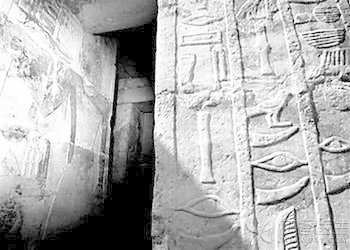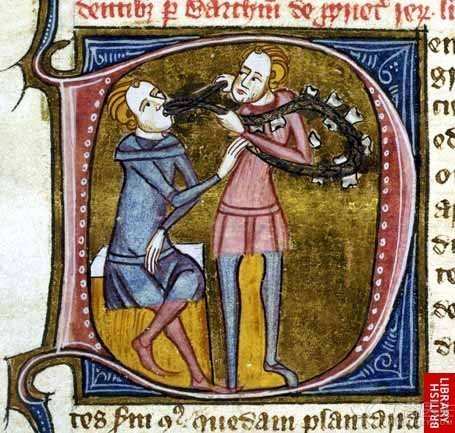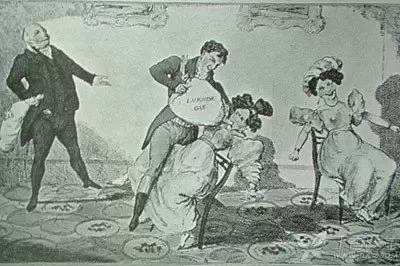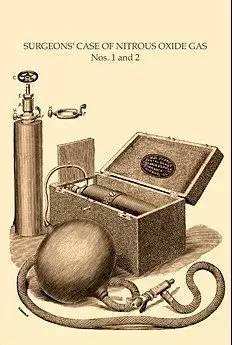
Have you ever seen a dentist? Are you afraid of dentists?
There is a disease called dental phobia. Patients who have received or are about to receive dental diagnosis may feel panic, nervousness, anxiety, fear from the heart, unable to control their emotions and behaviors, and even have faster heartbeat, abnormal blood pressure, sweating, multilingual, muscle tension, pale complexion and even syncope.
Once there was a poor eight-year-old English girl who even starved to death because she refused to be a dentist.
Dentist phobia has existed for a long time.
This kind of dentist phobia may come from past (childhood) unpleasant dental experiences, such as painful tooth extraction surgery, painful dental nerve treatment, accidental choking during treatment, or nausea and vomiting caused by stimulation of pharynx, etc.
It may also come from exaggerated reports, especially the negative or satirical publicity of dentists such as movies, TV plays, cartoons, cartoons and jokes, which gives people the impression that dentists are associated with pain, torture and terror.
This fear can be traced back to ancient Egypt.
Egyptians also suffered from toothache. Archaeologists found through X-ray examination that some pharaoh mummies suffered from severe dental caries and common dental problems.
In 2006, an archaeological team discovered the first dentist’s tomb in Egypt, owned by three dentists working for Pharaoh. On the entrance of the tomb, two piled papyrus characters appeared repeatedly, shaped like [a long tooth with an eye].
According to speculation, this [long eye on long teeth] not only means that Pharaoh opens his mouth to let dentists recognize tooth decay with naked eyes, but also means that dentists use an evil spirit technique to expel evil gods attached to teeth with evil spirits (meaning pain).

This fear was not uncommon in early civilizations. Around 1000 BC, ancient India had a poem saying:
Hollow out the cave and let the pain of your teeth subside. Dig up the mountains and let the anger of your teeth subside.
However, the thought of using dental drills for treatment often doubles people’s fear.
At that time, the ancient Indians got inspiration from the principle of “drilling wood for fire”. Invented the hand drill. Generally speaking, It is to bend a bamboo piece into the shape of a bow, bind and connect the two ends with a rope as a bowstring, then put a hard round wooden stick on the bowstring and wrap it twice, then pull the bow left and right to make the round wooden stick quickly rotate on the glazed teeth. Such treatment may drive away the pain pathologically, but it brings great psychological panic to toothache patients.
The Link to the Experience of Pain
In Europe, the story of a “toothache god” has been circulating for a long time, and until now there are still colorful portraits and many rare treasures as evidence. The “toothache god” is a female Christian, formerly known as Saint Apollonia.
Because the then Roman Empire forced Christians to give up their faith. However, loyal to her faith, she was forced to have all her teeth pulled out, her skin torn, and finally burned alive. She was martyred in 249 A.D.
Later, people said that she sacrificed herself for suffering from toothache in exchange for people not suffering from it any more, so she was honored as “the god of toothache”.
In the 13th century, in memory of Apollonia who suffered, Milan first issued copper coins with her bronze statue. She held a tooth clamp in one hand and comforted the suffering people in the other, freeing them from toothache and headache.

The original [god of toothache] may not have anything to do with dentists. However, by the 11th century, as the Eastern Roman Empire inherited Galen’s tradition, medicine became the primary method to treat toothache, and dentists began to be directly associated with pain.
In the 11th century AD, Arab physician Albucasis first described the tools he had invented to remove tartar and prevent its long-term inflammation, erosion and bleeding. However, this treatment obviously brings pain. As a result, people combine the fear of toothache with the dislike of dentists.
The causal relationship in the middle has been cleverly reversed: initially, the dentist was needed because of toothache, and gradually people subconsciously penetrated into their toothache memory because of the dentist’s image.
The god of toothache has become such a metaphor, implying that dentists who were originally rescuers have become signposts pointing to unpleasant experiences.
Hairdresser extracts teeth
For a long time, dentists gave people the association of pain because they sought the peace of the gums in a destructive way-whether they used dental drills to remove rust or exaggerated iron forceps to remove tooth decay. As early as the Greek and Roman times before the advent of the Middle Ages, dental surgery and dentists had long been recorded.
In 1300 BC, Greek physician Aesculapius suggested that corroded teeth should be removed for the sake of health. Between 460 and 377 BC, the famous physician Hebrew Kladi first wrote down written references to forceps-the oldest dental tool that can be used to extract teeth as well as correct conodonts-which, of course, can cause severe pain.
In 200 AD, Greek doctor Galen classified oral anatomy, He described nerves and for the first time suggested that dental pulp is the part of the tooth that feels pain, which also provides a basis for performing surgery on the tooth. However, it will increase the probability of using knives and drills and people’s fear of this. To this day, there is still a treatment method to eliminate pain called “killing dental nerves”.
Argentine cartoonist Zino drew a cartoon about dentists. The real idea in the mind of the patient lying on the couch is to incarnate himself as a swordsman, fighting his sword and flying his legs in the clinic, killing dentists and anesthesiologists nowhere to escape. However, his body has to be at the mercy of the dentist at the moment.
Dentists are frightening or annoying, partly because people suspect that dentists are not skilled.
This fear was most pronounced in medieval Western Europe, when, due to a complete retrogression in medicine and technology, there was more recourse to prayers and miracles for pain or death. At that time, barbers were often concurrently dentists.
According to a belief at that time, evil spirits would invade and sojourn in the human body through hair. When the disease was serious, hair cutting became one of the ways to exorcise evil spirits in the body. Toothache and headache, like the pain caused by sudden attacks of evil spirits-or worms-were also exorcised by barbers in various ways.

Some cities, such as Reutlingen and Metzingen in South Germany, even stated in the barber’s license that barbers can treat chronic toothache and tooth infection, and even have the right to perform tooth extraction surgery. In the 14th century, barbers began to enter surgery schools to learn special dental knowledge.
For example, in 1308, there was a training school called Worshipful Company of Barbers in London, which is still a dental surgery training school today.
In 1530, the first book published in Leipzig, which focused entirely on dentistry, was called “Small Medicine Book for All Dental Diseases”. It had only 44 pages and covered topics such as dental caries drilling, gold filling, oral hygiene, fumigation of Hyfairy seeds to remove tooth worms and tooth extraction.
This book was not recognized by the medical professional school, but became the “Bible” of the barbers who treated medical diseases at that time. Such a simple and crude [dentist] naturally became the object of palpitations and doubts.
Nitrous Oxide: Uncontrollable Anesthesia Comfort
In order to overcome the fear of dentists, people have invented various psychological and medical methods, the most famous of which is an anesthetic gas called [laughing gas].
This gas, which is nitrous oxide, was discovered by Joseph Priestley in 1772. Humphrey David himself and his friends, Including poets Coleridge and Robert Souse, found that nitrous oxide can make patients lose pain, and after inhaling, they can still maintain consciousness, not lose consciousness, but feel comfortable, excited and make people laugh repeatedly, so they are called [laughing gas].
Soon, laughing gas became “ecstasy” at aristocratic dances. Let nobles, knights and ladies smile more brightly. It is especially used to relieve loneliness during the long voyage of ocean-going cruise ships. Laughing gas was introduced into the United States. Also began to enter the palace of science. On the night of October 10, 1844, chemist Colton gave a public demonstration of laughing gas in a Harvard University classroom. During the demonstration, a performer inhaled too much laughing gas, went into a state of madness, ran around, broke his body and bled profusely, still smiling and unaware of the pain.
In the audience, Sitting with a dentist named Horace Wells, He asked the bleeding performer if he felt any pain, and the performer replied that he did not. This immediately inspired him, so he invited Caulton to inhale laughing gas for himself and pull out a bad tooth. Sure enough, the pain was very slight, and he immediately realized that laughing gas was a potential anesthesia method. From then on, Dr. Wells decided to use laughing gas for tooth extraction.
However, what is little known is that it was this Dr. Wells who, when performing nitrous oxide anesthesia himself again in Boston Massachusetts Hospital the following year, developed dangerous reactions and purple malnutrition when his consciousness completely disappeared due to excessive concentration.
Unwilling to fail, he applied to Harvard University again for a public demonstration of nitrous oxide anesthesia. What happened was that the bag storing nitrous oxide broke and the nitrous oxide leaked, so that the concentration was not enough. The patients who had been extracted groaned and the audience lambasted Wells as a liar. As a result, he was expelled from the dentistry and was disheartened from now on.

However, his student Dr. Morton did not give up because of this. He discussed with medical scientist and chemist Jackson, Looking for a more reliable anesthetic gas, we finally found ether. On September 30, 1846, Morton successfully used ether to remove the bad tooth for the patient. Two months later, a London dentist named Robinson completed Britain’s first ether-induced tooth extraction operation and successfully removed a molar for a young girl.
However, diethyl ether has a pungent odor, It is also flammable, So researchers turned to looking for better narcotics. Soon, Chloroform (chloroform) replaced ether. Wells, the dentist who demonstrated the failure of nitrous oxide anesthesia, was also addicted to chloroform and tried chloroform with his own body sleeplessly. He was almost crazy. Finally, one day, he cut off the femoral artery, sucked chloroform and ended his life in a less painful way.

Wells’ death seemed to be an ominous start. Accidents of chloroform overdose or allergy made people afraid to use anesthesia casually. Even Evans, the royal dentist of Charles Louis Napol é on Bonaparte, would rather choose early laughing gas than take risks at will.
The medical journal “The Lancet” simply commented on anesthetic gas as follows: [This gas is considered to be an unknown, magical and harmless agent; But in fact, it has been used in general anesthesia, a widely known, not magical and most dangerous thing.]
Although today, Anesthesiologists and anesthesia are highly scientifically safe, However, when you lie on an excessively clean reclining chair at a loss, facing instruments with branches and branches like instruments of torture, open your mouth and let strangers wearing masks manipulate you, and the rapidly rotating dental drill reaches into your mouth, the fear of the unknown gas flowing into your body still cannot be completely removed, just like instinct, and cannot be driven away.
